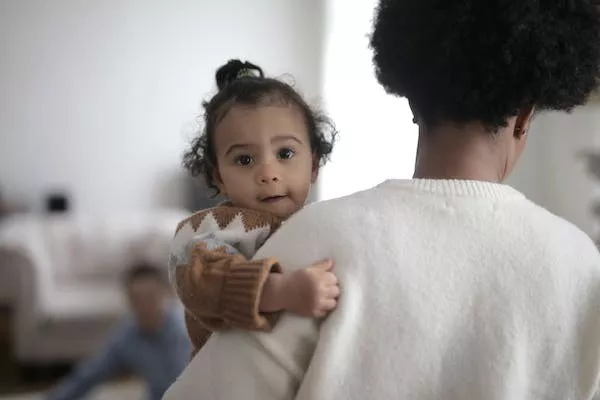In the realm of parenting, few things are as heart-wrenching as the thought of Sudden Infant Death Syndrome (SIDS). Parents are often left wondering about the factors that contribute to this tragic occurrence. In this comprehensive article, we delve into the depths of when the risk of SIDS is highest, exploring key aspects that every parent should be aware of to create a safe sleep environment for their little ones.
Sleep Environment Matters: Understanding the Key Factors
The sleep environment plays a pivotal role in determining the risk of SIDS. Research indicates that infants who sleep on their stomachs face a significantly higher risk compared to those placed on their backs. To optimize the sleep environment, it is crucial for parents to adhere to the “Back to Sleep” campaign recommendations, promoting safe sleeping positions to reduce the risk of SIDS.
Additionally, the sleep surface deserves attention. Firm mattresses and tight-fitting sheets are essential components of a safe sleep space. The avoidance of soft bedding materials, such as pillows and quilts, further contributes to a secure sleep environment for infants.
Extended Details: Research studies, including a landmark study published in the Journal of the American Medical Association, have consistently highlighted the association between prone sleeping positions and an increased risk of SIDS. By following these recommended sleep guidelines, parents can significantly mitigate the risk factors associated with sleep-related infant deaths.
Age Matters: Peaks and Troughs in SIDS Risk
Another critical aspect that parents should be aware of is the age-related vulnerability to SIDS. The highest risk period for SIDS is observed during the first six months of an infant’s life. However, the risk gradually diminishes as the child grows older. Understanding these age-related dynamics is essential for parents to remain vigilant during the critical early months.
As infants begin to develop the ability to roll over, it becomes important for parents to adapt to these changes in sleep behavior. While placing an infant on their back to sleep is recommended, it is equally crucial to ensure a safe sleep environment when infants start rolling over independently.
Extended Details: According to the American Academy of Pediatrics, the risk of SIDS is highest between the second and fourth months of life. Vigilance during this period, combined with ongoing safe sleep practices, significantly contributes to reducing the overall risk of SIDS.
Environmental Factors: Unraveling the Impact of Surroundings
Beyond sleep positions and age, environmental factors also play a significant role in influencing the risk of SIDS. Exposure to tobacco smoke, for instance, is a well-established risk factor. Infants who are exposed to secondhand smoke, both during pregnancy and after birth, face an increased risk of SIDS.
Creating a smoke-free environment is paramount. This not only involves avoiding smoking during pregnancy but also ensuring that the baby’s surroundings remain free from tobacco smoke. Implementing this precautionary measure significantly contributes to reducing the risk of SIDS.
Extended Details: A comprehensive analysis published in the journal Pediatrics highlighted that infants exposed to maternal smoking during pregnancy have a twofold increase in the risk of SIDS. This emphasizes the critical role of maintaining a smoke-free environment for infant safety.
Sleeping Alone vs. Bed-Sharing: Navigating the Controversy
The topic of bed-sharing is one that sparks considerable debate among parents and healthcare professionals. While some advocate for the benefits of co-sleeping, it is essential to recognize the associated risks, particularly in the context of SIDS.
Experts recommend that infants should sleep in close proximity to their parents without sharing the same sleep surface. Utilizing a crib or bassinet in the parents’ room for the first six to twelve months provides the advantages of closeness while minimizing the risk factors associated with bed-sharing.
Extended Details: The American Academy of Pediatrics advises against bed-sharing, citing an increased risk of SIDS. This recommendation is reinforced by various studies, including a comprehensive review published in the journal BMJ Open, emphasizing the importance of separate sleep surfaces for infants.
Temperature Control: Striking the Right Balance
Maintaining an optimal sleep environment involves not only considering the physical surroundings but also regulating the temperature. Overheating has been identified as a potential risk factor for SIDS. Parents are encouraged to dress infants in lightweight clothing and keep the room at a comfortable temperature.
Monitoring the baby’s temperature through subtle cues, such as feeling the back of their neck, can aid parents in ensuring that their infant is neither too hot nor too cold during sleep. Striking this balance contributes to a safer sleep environment.
Extended Details: A study published in the Archives of Disease in Childhood revealed a correlation between an increased risk of SIDS and infants being excessively wrapped or dressed warmly during sleep. This underscores the importance of maintaining an optimal sleep temperature for infant safety.
In conclusion, understanding when the risk of SIDS is highest empowers parents to take proactive measures in creating a safe sleep environment for their infants. By prioritizing recommended sleep positions, being aware of age-related vulnerabilities, addressing environmental factors, navigating the bed-sharing controversy, and regulating the sleep environment, parents can significantly reduce the risk of Sudden Infant Death Syndrome and provide a secure foundation for their child’s healthy development.


